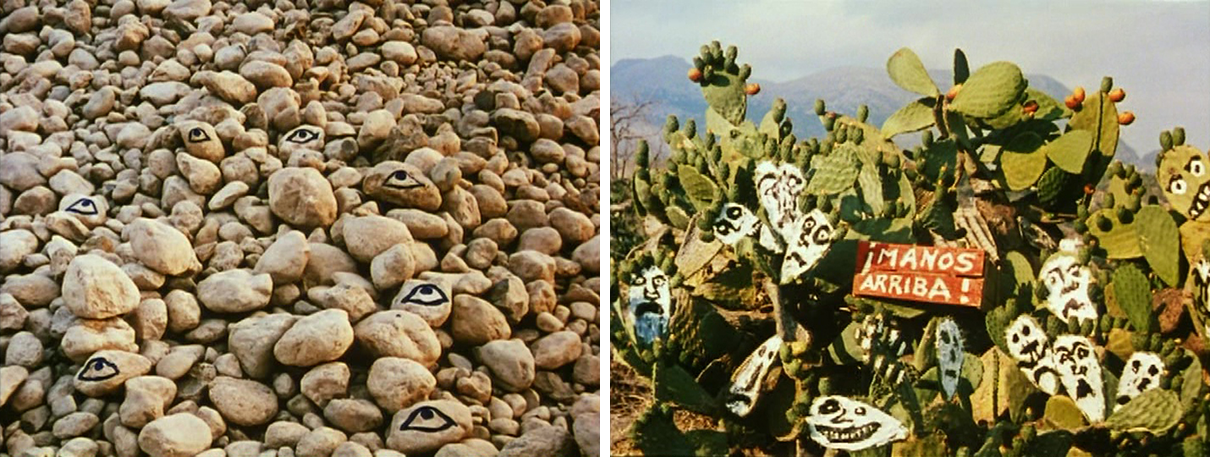On “The Truth 24 Times a Second”

The idea of “the truth 24 times a second” is erroneous. The acceleration that takes place in the mechanical process creates a gap between the “function” of mechanical repetition and its “form” as a continuous flow that is only perceivable in a purely subjective experience of time.
Fragmentation, in the present-day montage conception, is not an automatic result of a fragmentation built into the mechanics of the film. It solely corresponds to the searching movements in our consciousness, to the shifting back and forth between the various layers of reality. Just as the corners, holes, convex and concave surfaces in a given space can be explored, the time fragments in the film correspond to the convex and concave surfaces in our time experience as it is shaped by various states of mind.
Whereas Eisenstein’s “cubist” montage created an equivalent in time for the free standpoint in some given space, in today’s montage we move freely in a space that no longer has any borders. The dialectic element lies in the fact that, again and again, the montage is abolished by its own disappearance, an amorphous flood of observations in which shapes waveringly emerge. These shapes represent, so to speak, our feeling of responsibility, choice, direction. They are microscopic signs of everyday solidarity in the flow of perception.
Film is such an impressionable medium that any schematic categorisation within time and space has become unfeasible. This is the freedom and the uncertainty we have acquired since cubism. (Whereas most films, even modern ones, are still at some pre-cubist evolutionary stage such as impressionism, or on some sidetrack of modern art as magic realism.) Anything and everything can serve to turn a film into a space. The important thing is not the reproduction of a three-dimensional reality, but by way of the "time elements" in a film, the creation of an autonomous space. The whole syntaxis of camera angles and movements that was once hoped for has been shattered along with the notion of a unified space or a central piece of subject matter or, one step further, a mechanical fragmentation countering that central piece of subject matter.
Despite what we have been taught, on the level of montage, the “cut” can introduce an element of slackness. Even more importantly, it can provide the horizontal or vertical lines with which we demarcate the very transitory arenas or playgrounds in the space of our film. From this totality of undefined spaces and wavering shapes, a final form emerges as soon as the film has unwound itself. This final form, convenient in size, can be wrapped up by the viewer and carried off in his head. It is a thing, but it is a thing that moves, it is fragile and expansive at the same time and it can lose itself in the space inside the head. But as long as we can keep an eye on what is going on in there, whenever we want, we can scrutinise the forces that rule reality or, for whoever wishes to put it that way, the universe.
The dynamic equilibrium of a composition is a permanent check on the tension, violence and aggression in the real world. In that sense, it is an ideal situation. The every-day aspect, the upper layer of consciousness consists of never forgetting the unchecked violence and its opposite pole, the unchecked slackness. If the final aim of a work of art is the breaking down of weak forms and the creation of an equilibrium of strong forms, then weaknesses, stagnations and moments of shattering fervour also must be included in the composition. This means that one must choose one’s point of departure in ordinary reality which, in essence, rebels every way it can against composition. Thus, film has two layers, the unending interaction of strong forms in dynamic equilibrium expressing a general progressive view of the world, and a series of moments of stagnation and unresolved violence, corresponding to the individual fate that cannot (yet) be steered by strong forms and usually accounts for the more anecdotal streams in the film. But in the process of filmmaking, these two layers must merge into a final form in which there is no longer any hierarchic distinction between the component elements. This is why even a text or anecdote can become a spatial element. Emotionally speaking, the “work” of filmmaking is indeed the energy expended mirroring information back and forth and granting that information its final form. The film itself is only a vehicle for information, not a product. It is a substance that possesses certain characteristics that can be played off against each other. This accounts for the idea of dynamic structure in contrast to the idea of a final product.

Although written in 1967, this text was originally first published in: Johan van der Keuken, Zien kijken filmen (Amsterdam: Van Gennep, 1980). This translation was made on the occasion of the retrospective ‘Through the Lens Clearly: A Retrospective Look at the World According to Johan van der Keuken’ held at MoMA in 2001.
With the courtesy of Prudence Peiffer and Josh Siegel
Images from Een film voor Lucebert (Johan van der Keuken, 1967)

